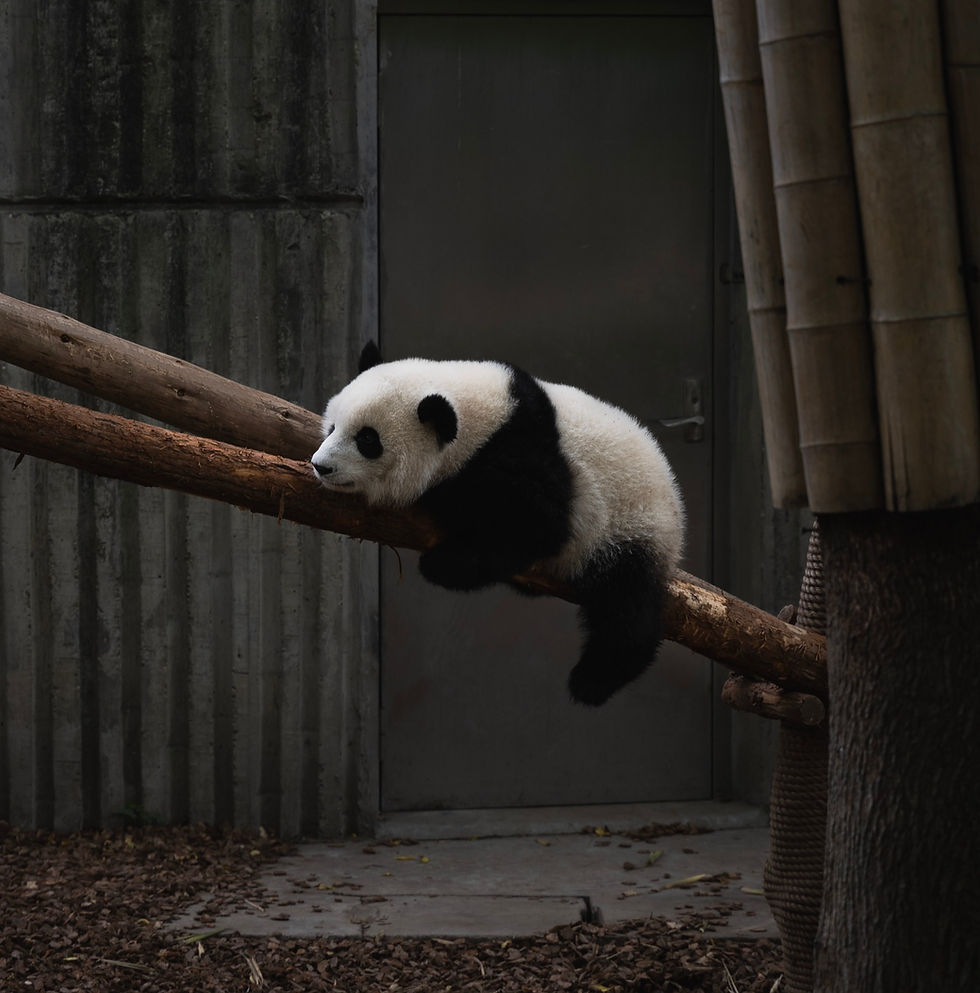Conservation Victory: Giant Pandas No Longer Endangered
- Katie Byng-Hall
- Aug 17, 2021
- 3 min read
Updated: Aug 18, 2021
Kate Byng-Hall relates the happy news that China’s national animal – the giant panda – is no longer an endangered species.

Photo by Ningyu he
In a landmark moment for wildlife conservation, it has been declared that giant pandas are no longer an endangered species. After exceeding a total of 1800 animals living in the wild, the bears are now instead considered by the World Wildlife Fund (WWF) and Chinese officials to be ‘vulnerable’.
Chinese officials have credited the progression to a dedicated conservation effort to protect the country’s national animal, including extensive expansion of the bamboo forests which comprise their primary habitat. Cui Shuhong of the Ministry of Ecology and Environment said that the achievement “reflects their improved living conditions and China's efforts in keeping their habitats integrated”.
A Much-Beloved Species
Alongside the red-crowned crane and the Chinese dragon, the giant panda is the national animal of China, and is considered one of the country’s most cherished symbols as well as a significant source of tourist revenue.
However, the species has been struggling for decades due to the very specific conditions they require to live and thrive, so much so that they feature in the WWF’s logo as an icon of the importance of conservatism. Currently, the species’ pickiness means there are only six mountain ranges in the whole of China where they are able to live in the wild.
Giant pandas eat almost solely bamboo, and bamboo forests have been the target of extensive deforestation in China in recent years. Pandas are sensitive to any change in habitat as different varieties of bamboo bloom at varying points in the year, so if just one variety is eliminated by deforestation, the panda population in that area may starve while waiting for the next variety to become edible.
The bears also only reproduce once a year, with just one cub typically surviving due to their tiny size at birth. Female pandas are only fertile for around six weeks of every year, meaning it’s not unusual for them to not become pregnant at all in a year if they do not find an appealing enough partner, a problem exacerbated by smaller populations. Essentially, giant pandas are especially vulnerable to changes in habitat or circumstance, meaning they require more intensive conservation attention than other species may.
Inspirational Conservatism
In order to protect this cherished animal, the Chinese government imposed strict regulations on the destruction of pandas’ habitats in a move which many argue should be emulated in the protection of other species.
Statistics tracking the giant panda population over hundreds of years suggest that the reason for their decline in recent decades is, unequivocally, human activity, a pattern which is seen repeated in many other stories of extinction or endangerment. China has been applauded for their stringent promotion of conservation efforts, first established in 1988 with the Wildlife Protection Law which introduced legal measures to protect endangered species from human disruption. One implication of this was the implementation of strict sanctions for anyone found to be hunting endangered species; since 1988, poaching of giant pandas has been eradicated.

The giant panda is so well-loved in China that the government has decided to open Giant Panda National Park – a protected area spanning multiple provinces and encompassing 67 existing panda reserves. While a gesture of this nature may not be possible in every country and for every endangered species, the sheer dedication to the conservation effort is undoubtedly inspirational.
Many argue that strict legislation, extensive breeding and reproduction schemes, habitat rejuvenation and national surveys of the animals make giant panda conservation a model campaign which the rest of the world should be following in the global effort to preserve species.
We are a not for profit socio-ethical impact initiative advocating for topics that matter, whilst supporting wider planetary change and acknowledgement. Support our journalism by considering becoming an advocate.













Comments